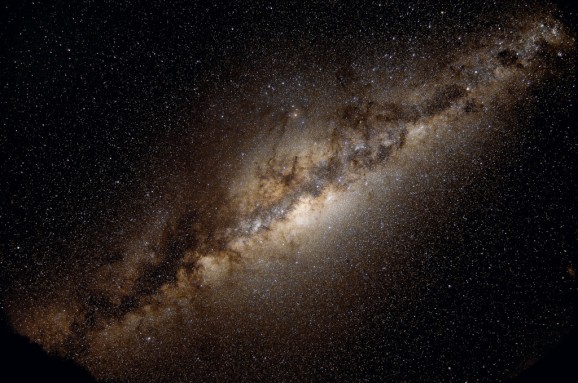Billions Of Potentially Habitable, Earth-Like Planets Could Exist In The Milky Way
Let's see what's out there.
This article is more than 2 years old
 As you’ve probably heard by now (and definitely heard if you’re a regular GFR reader), the Kepler telescope’s (RIP) search for potentially habitable planets has been wildly successful. There are thousands of planets that might support life, but the bad news is that most of these are millions or billions of light years away, which means that in order for that to do us any good, we’d need to master manned interstellar travel, which is going to take us some time. But a recent discovery might change all that. Thanks to Kepler data, scientists have discovered that there are a bunch — possibly even billions — of Earth-like planets inside our own Milky Way.
As you’ve probably heard by now (and definitely heard if you’re a regular GFR reader), the Kepler telescope’s (RIP) search for potentially habitable planets has been wildly successful. There are thousands of planets that might support life, but the bad news is that most of these are millions or billions of light years away, which means that in order for that to do us any good, we’d need to master manned interstellar travel, which is going to take us some time. But a recent discovery might change all that. Thanks to Kepler data, scientists have discovered that there are a bunch — possibly even billions — of Earth-like planets inside our own Milky Way.
The Milky Way has somewhere around 200 billion stars. Astronomers estimate that one in every five of these stars has at least one planet orbiting around it that is the right temperature to support the existence of liquid water on its surface, and thus, life. That’s at least 40 billion planets, and maybe far more. Of those 200 billion stars, roughly 40 billion are similar to the Sun, which means that those stars support at least 8 billion planets, and maybe more.
I’m anthropomorphizing the Kepler here, but I hope it’s proud of itself. The whole point of the telescope was to attempt to identify and estimate the number of potentially habitable “Goldilocks” planets beyond our solar system, and even though it’s now defunct, it gathered so much data in its four years that scientists are still uncovering revelatory information such as this.
University of California Berkley researcher Erik Petigura estimates that the closest of these planets could be only 12 light years away. So that’s not exactly the distance of a road trip to go see Grandma, or even a trip to Mars, but it’s significantly closer than we’d previously suspected.
The astronomers who made this discovery are honing in on 42.000 stars that bear a particularly close resemblance to the Sun in terms of size and temperature. Around those 42,000 stars are 603 planets, 10 of which are Earth-sized and in that Goldilocks range of “close enough, but not too close to the sun to maintain liquid water.” It’s quite possible, if not likely, that some of these planets still aren’t suitable for life — just because liquid water could potentially exist on the surface doesn’t mean it still does (such as is the case with Venus). There could also be atmospheric changes on a planet, such as on Mars, that would make habitability difficult or impossible.
Still, as scientists continue searching for potentially habitable planets, we’re learning that the hunt isn’t akin to trying to find a needle in a haystack. That ought to make people like Stephen Hawking happy, who believes that humanity’s expiration date will be sometime in the next millennium unless we find a way to leave Earth and live elsewhere.












